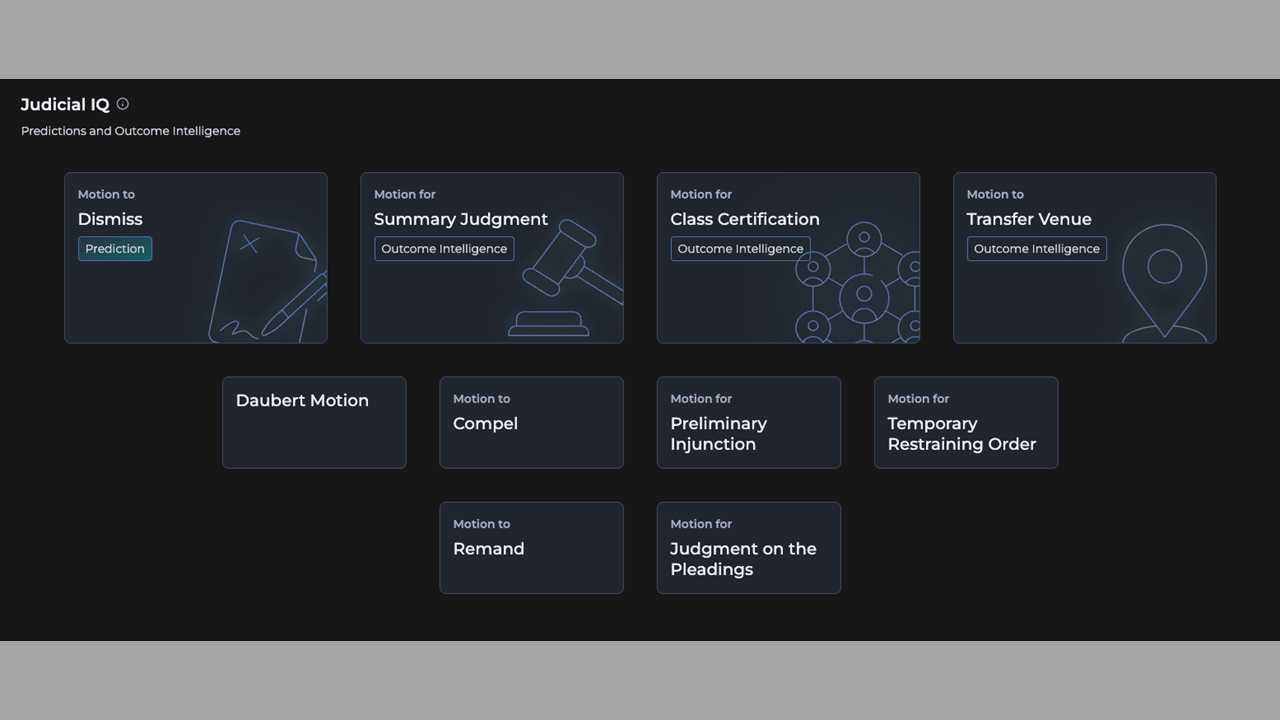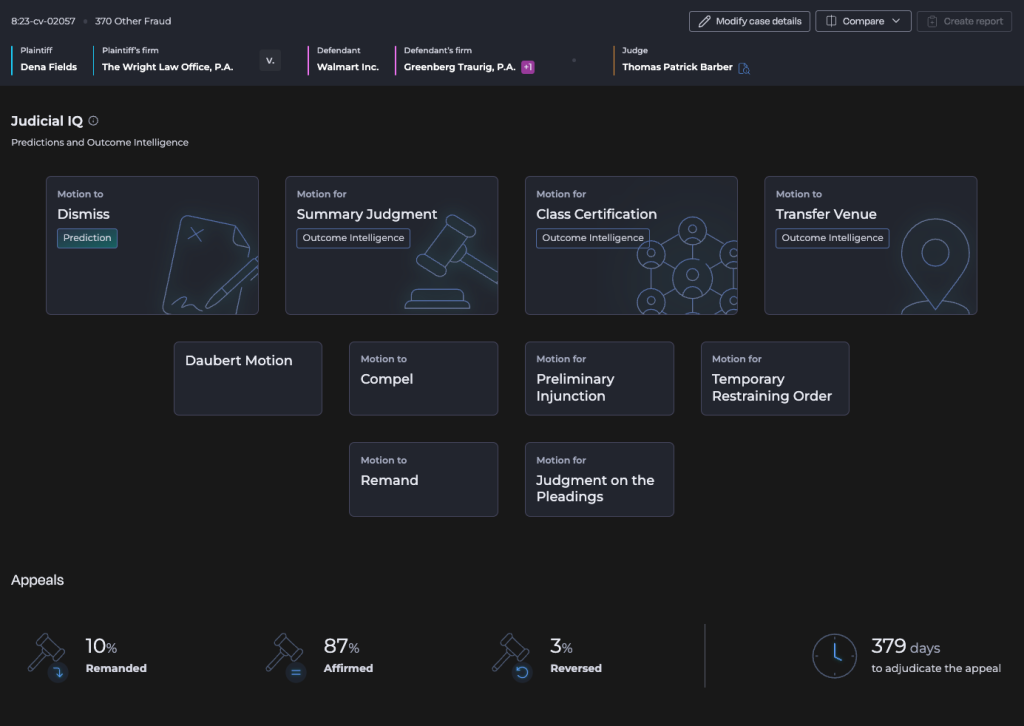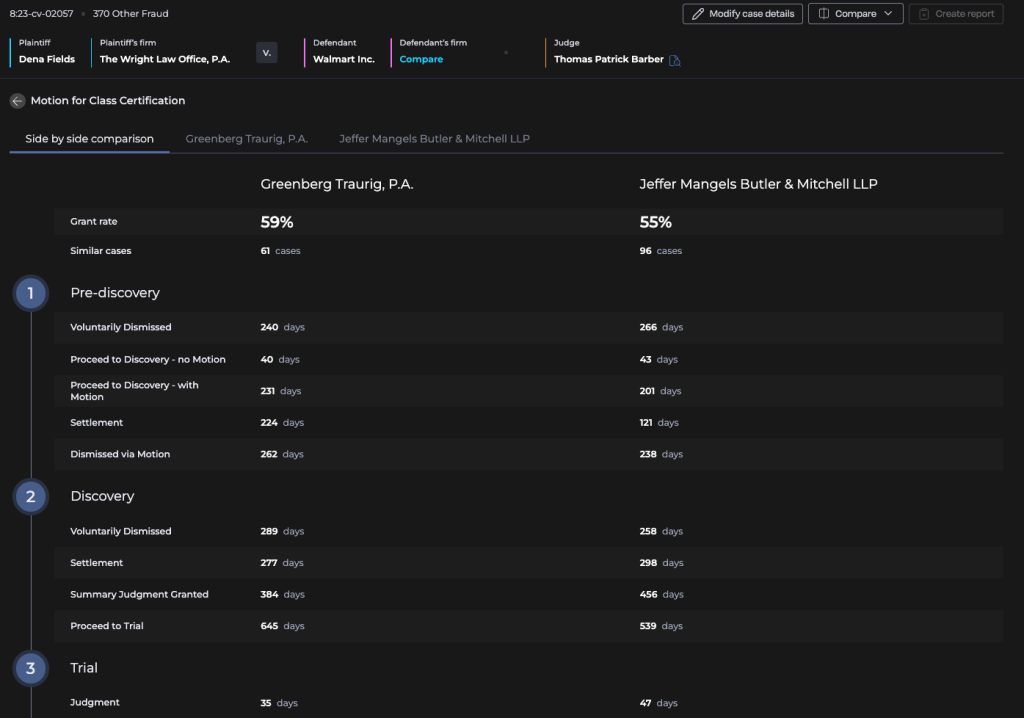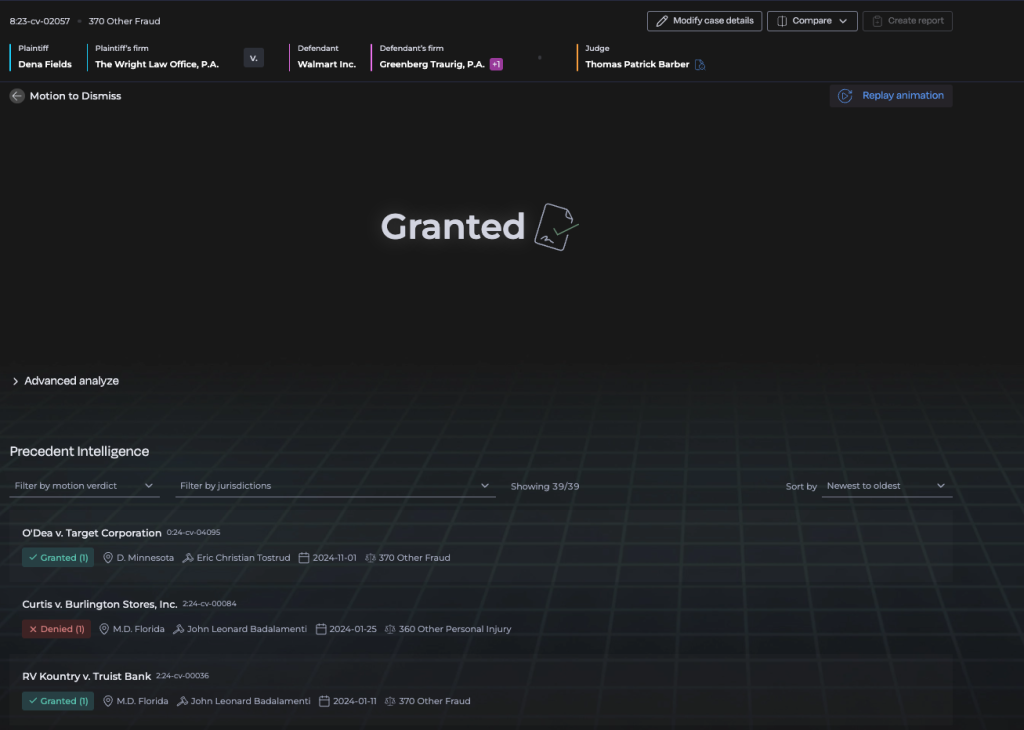Pre/Dicta, a legal analytics company that specializes in predictive modeling of judicial decision-making, today announced a significant expansion of its platform featuring new appellate forecasting capabilities, enhanced biographical intelligence tools, and comparative prediction features across judges, venues and law firms.
The New York-based company, which claims an 85% accuracy rate in predicting the outcomes of motions to dismiss, has broadened its coverage to include forecasting across the entire litigation lifecycle, from pre-suit analysis through appellate proceedings.
Previous coverage:
- Litigation Prediction Platform Pre/Dicta Expands Into New Motion Types and Case Timelines.
- Following Pre/Dicta’s Acquisition of Gavelytics, The Two Companies’ CEO Discuss What The Deal Means for Legal Analytics.
- Shuttered Legal Analytics Company Gavelytics Is Acquired By Recently Launched Analytics Company Pre/Dicta.
- New Judicial Analytics Product Predicts Motion Outcomes with Claimed 86.7% Accuracy.
Appellate Forecasting
The most significant addition is appellate forecasting, which allows users to assess the likelihood of appeal and probability of reversal in federal cases.
Unlike traditional legal research that focuses on legal precedent and case facts, Pre/Dicta’s approach analyzes behavioral patterns of decision-makers using what founder and CEO Dan Rabinowitz calls “doppelganger” cases.
“We’re trying to find the cases that have the highest degree of correlation with your case as it relates to outcome forecasts,” Rabinowitz explained during a briefing on Friday, which was also attended by Alex Wieck, vice president of business development.
That means identifying cases that have similar composition in terms of the case matrix – the parties, the attorneys and the judge. The system searches across the federal docket to find cases with similar characteristics rather than limiting analysis to specific judges’ historical rulings.
For appellate predictions, the platform can forecast from the time a case is filed whether a matter is likely to be appealed and, if it is, whether it will be affirmed, remanded or reversed, providing percentages based on historically similar cases. This capability is currently available for both federal and California state cases.
Enhanced Motion Coverage
With today’s release, Pre/Dicta has expanded its motion coverage to include temporary restraining orders, preliminary injunctions, motions for judgment on the pleadings, Daubert challenges and motions to remand.
That brings its motion modules to 10, as it already covered motions to dismiss, motions for summary judgment, motions for class certification, motions for venue transfer, motions to compel, and motions for judgment on the pleadings.
Biographical Intelligence
The updated platform introduces enhanced biographical intelligence that allows users to isolate specific judicial characteristics – such as political affiliation, educational background or appointment history – to assess their impact on case outcomes. Users can drill down into these characteristics to see how they influence decision-making patterns.
“We enable the user to go in and say, hey, I’m really curious, like, what do women do in these cases?” Rabinowitz said.
The system can show whether political affiliation, for instance, has a measurable impact on outcomes compared to the overall prediction, as Wieck demonstrated.
“When we look just at Republican judges, how do they adjudicate motions to dismiss when they preside over cases where we’ve got a Fortune 500 defendant in the retail industry that’s generating a certain level of revenue represented by what’s an Am Law 10 firm against a solo practitioner representing an individual class representative?”
The platform also introduces “baseball card” style judicial profiles that benchmark judges against peers in their district, circuit and across the federal judiciary for each motion type.
Comparative Predictions
A new comparative function allows users to assess different scenarios by changing variables such as law firms, judges or venues while keeping other case elements constant. This feature is designed for high-stakes decision-making, including counsel selection and venue shopping.
Wieck demonstrated how the system could compare law firms, using as an example Greenberg Traurig against Susman Godfrey, showing how each firm’s involvement might affect success probabilities for specific motions while maintaining all other case variables.
Precedent Intelligence Cases
Perhaps the most novel part of today’s release is the “Precedent Intelligence Cases” feature, which enables users to surface the specific historical cases that form the foundation of Pre/Dicta’s predictions. Users can access and download documents from these cases directly through the platform, with direct links to PACER filings.
“These are the cases that are just like yours in some way,” Rabinowitz said. “So why not see what people won with?” The system filters these cases by outcome, allowing users to examine only successful cases similar to their own.
How It All Works
Pre/Dicta’s approach differs significantly from traditional legal analytics tools that rely on keyword searches or basic win/loss rates. The platform uses machine learning models trained on 15 million historic federal litigation cases, with 50 to 100 data points associated with each case.
The system breaks down parties and law firms into dozens of variables each, while analyzing judges across biographical characteristics including educational background, political affiliation, net worth, and geographic location.
As Wieck explained, the system might identify correlations between a judge’s Ivy League education, net worth, and geographic location combined with defendant characteristics like Fortune 500 status and industry sector.
“All machine learning really is an advanced way to generate a probability as a result of identified correlations,” Wieck said. “Mathematically identified correlations.
“The reason this works and the reason we can do it from the outset of a case is because we have a massive amount of highly classified data. And that highly classified aspect of this really comes down to the number of variables we can associate with a case.”
User Applications
Rabinowitz and Wieck said that the platform serves diverse use cases across the litigation lifecycle. Insurance companies use it for early claim assessment, while law firms employ it for motion preparation and settlement positioning. The system also supports pre-litigation analysis, allowing users to assess cases before filing or even before receiving demand letters.
One notable application involves mediators using the platform to establish objective success probabilities during settlement negotiations, helping both sides reach more realistic positions based on data rather than subjective assessments.
Interface Redesign
The expanded capabilities come with a redesigned user interface featuring two main entry points: filed matters accessible by docket number, and pre-litigation matters that can be simulated by manually entering case details. The platform includes animation features to help users understand the underlying analytical processes.
Pre/Dicta, which launched motion prediction capabilities in July 2022, has been building its database and expanding coverage ever since its founding. The platform focuses exclusively on federal cases plus California state matters, representing what the company describes as the largest structured federal case dataset available for predictive modeling.
The company’s approach represents a shift from traditional legal research methods that emphasize legal precedent and factual analysis toward behavioral analytics that attempt to predict judicial decision-making patterns based on case composition and participant characteristics.
 Robert Ambrogi Blog
Robert Ambrogi Blog


